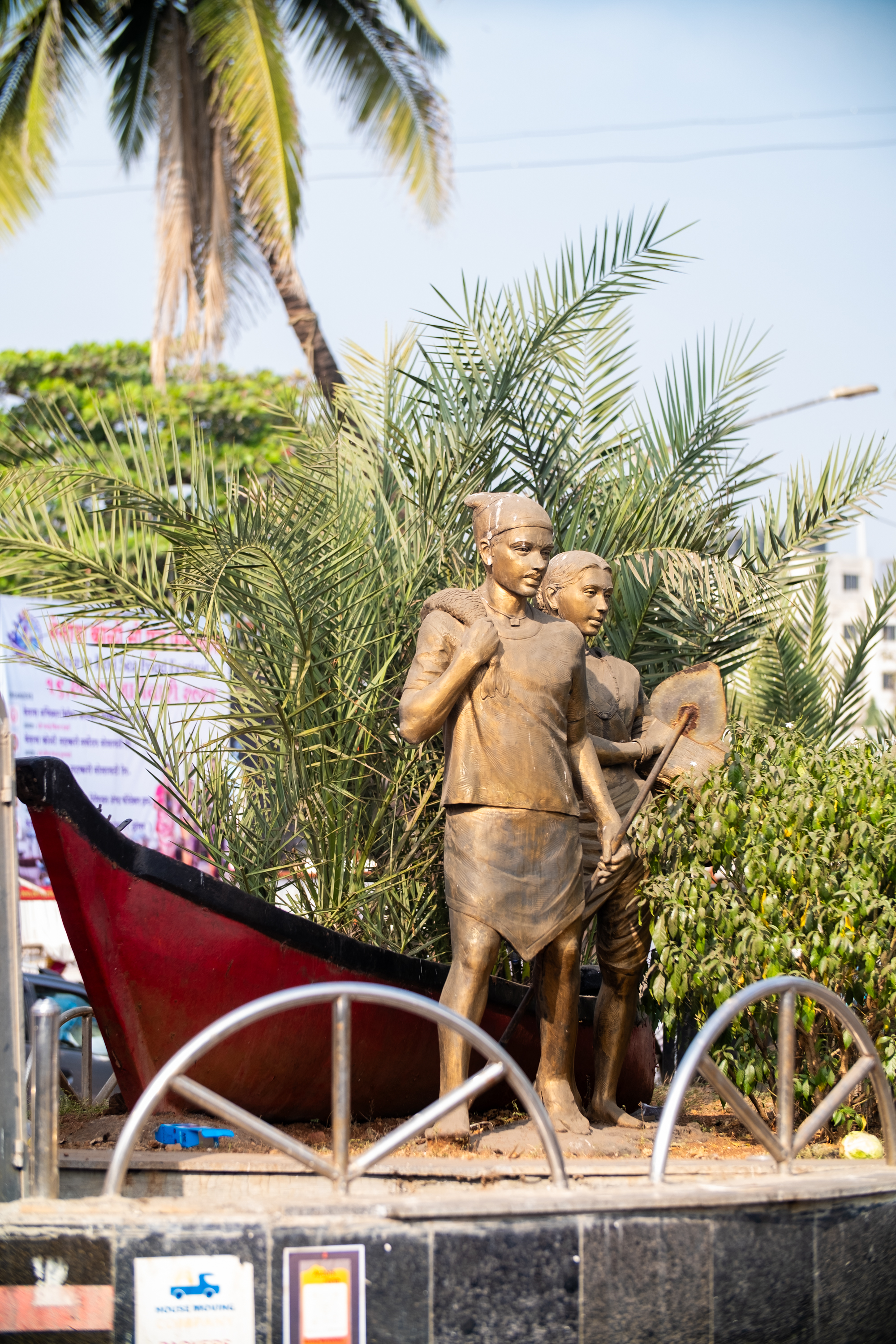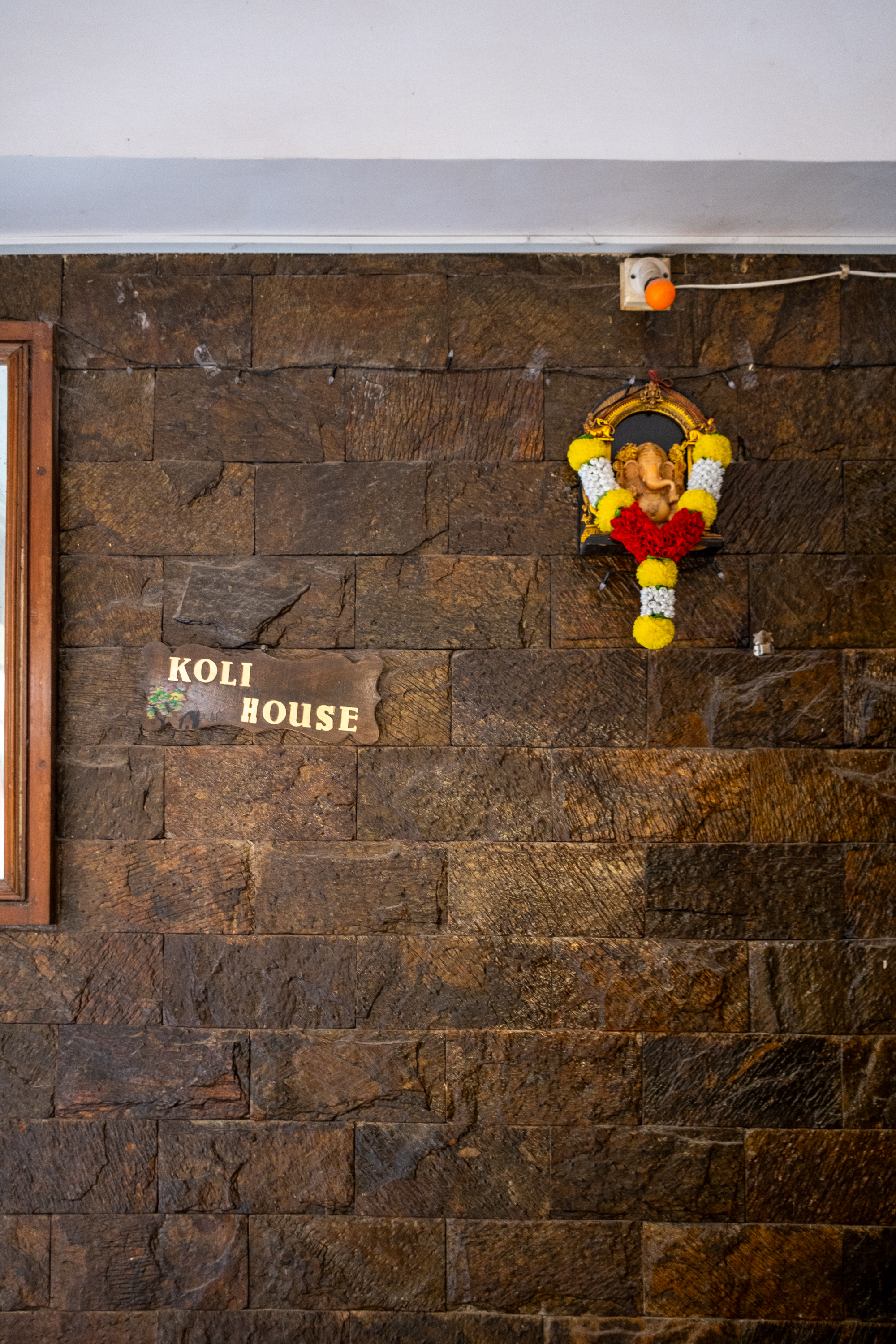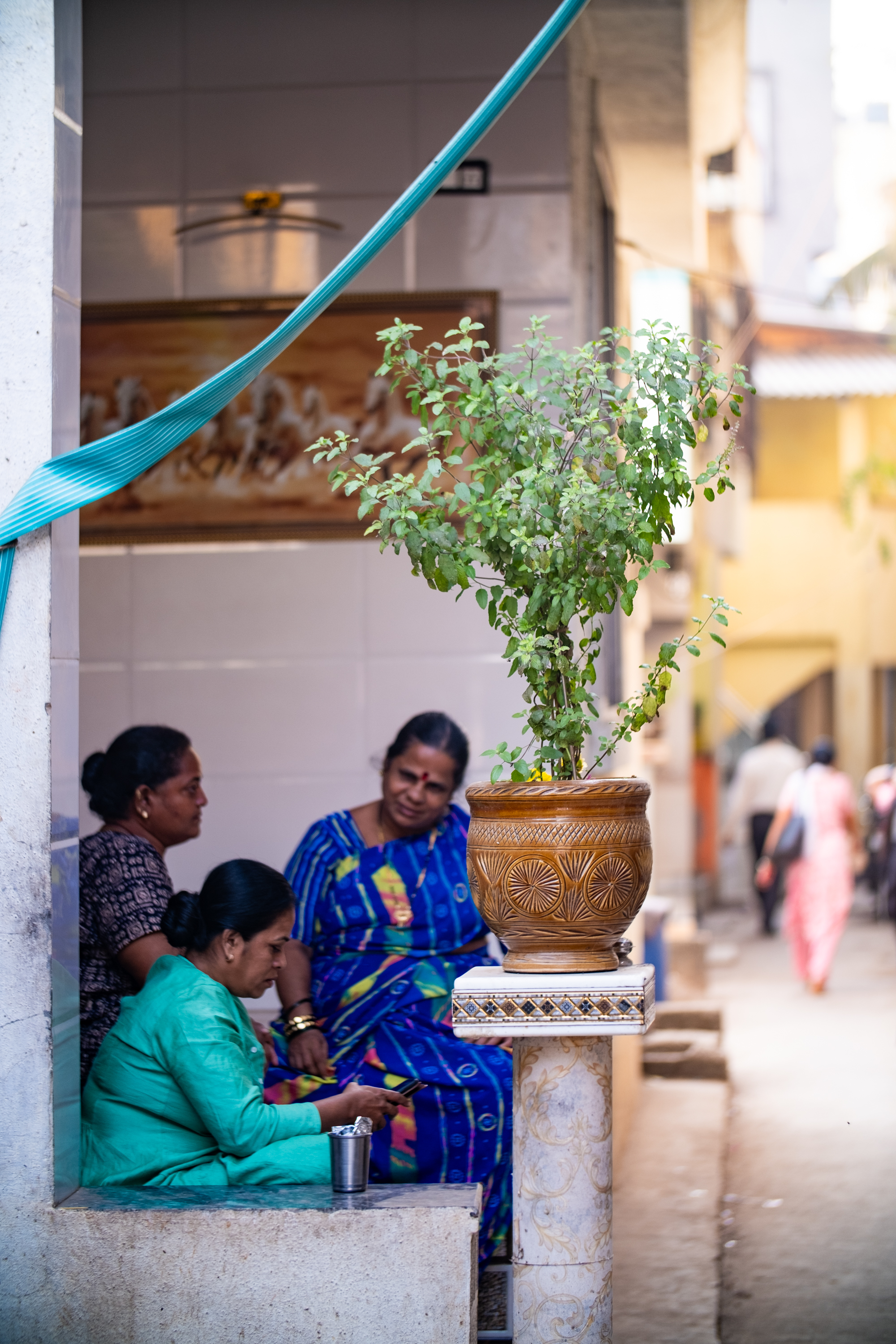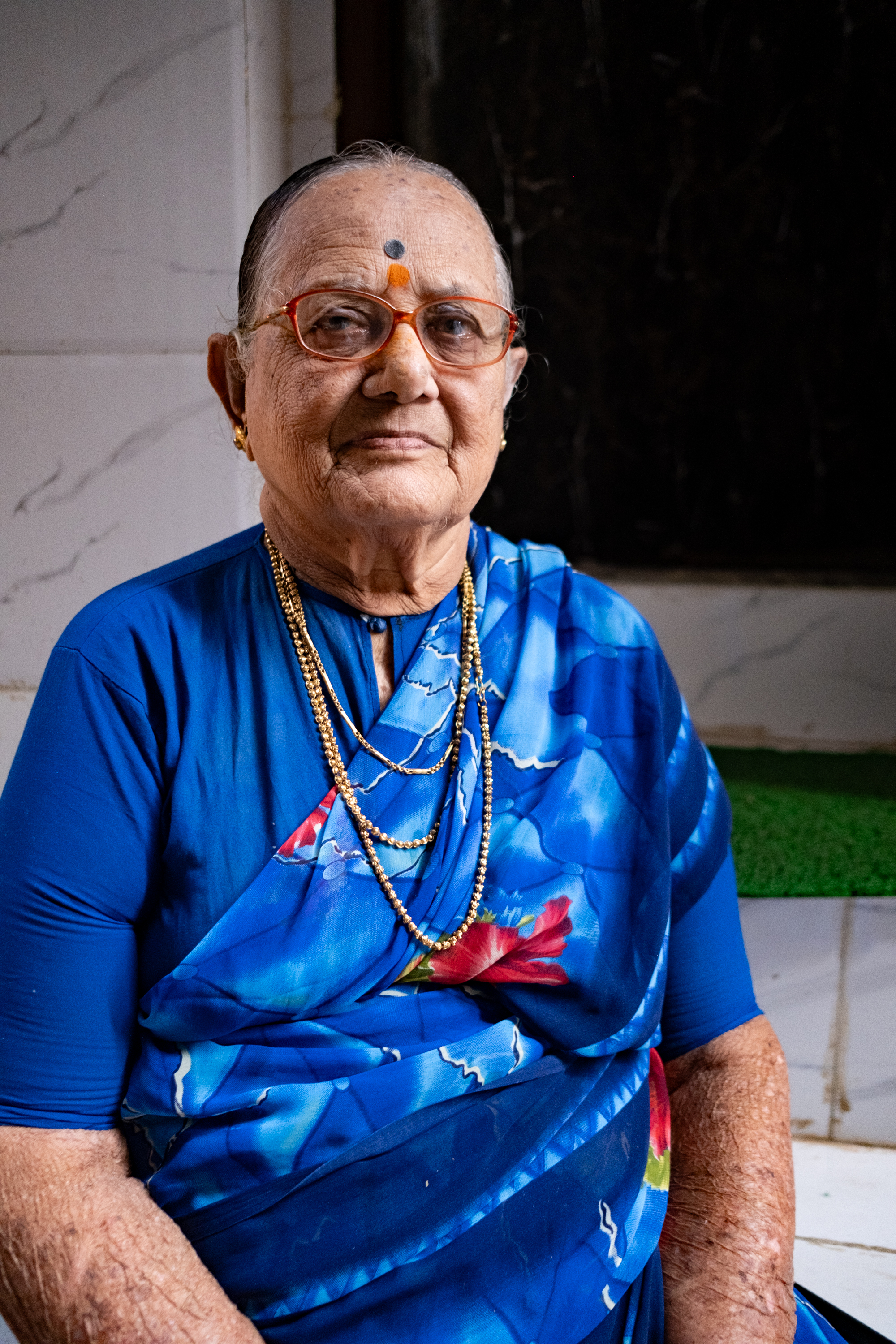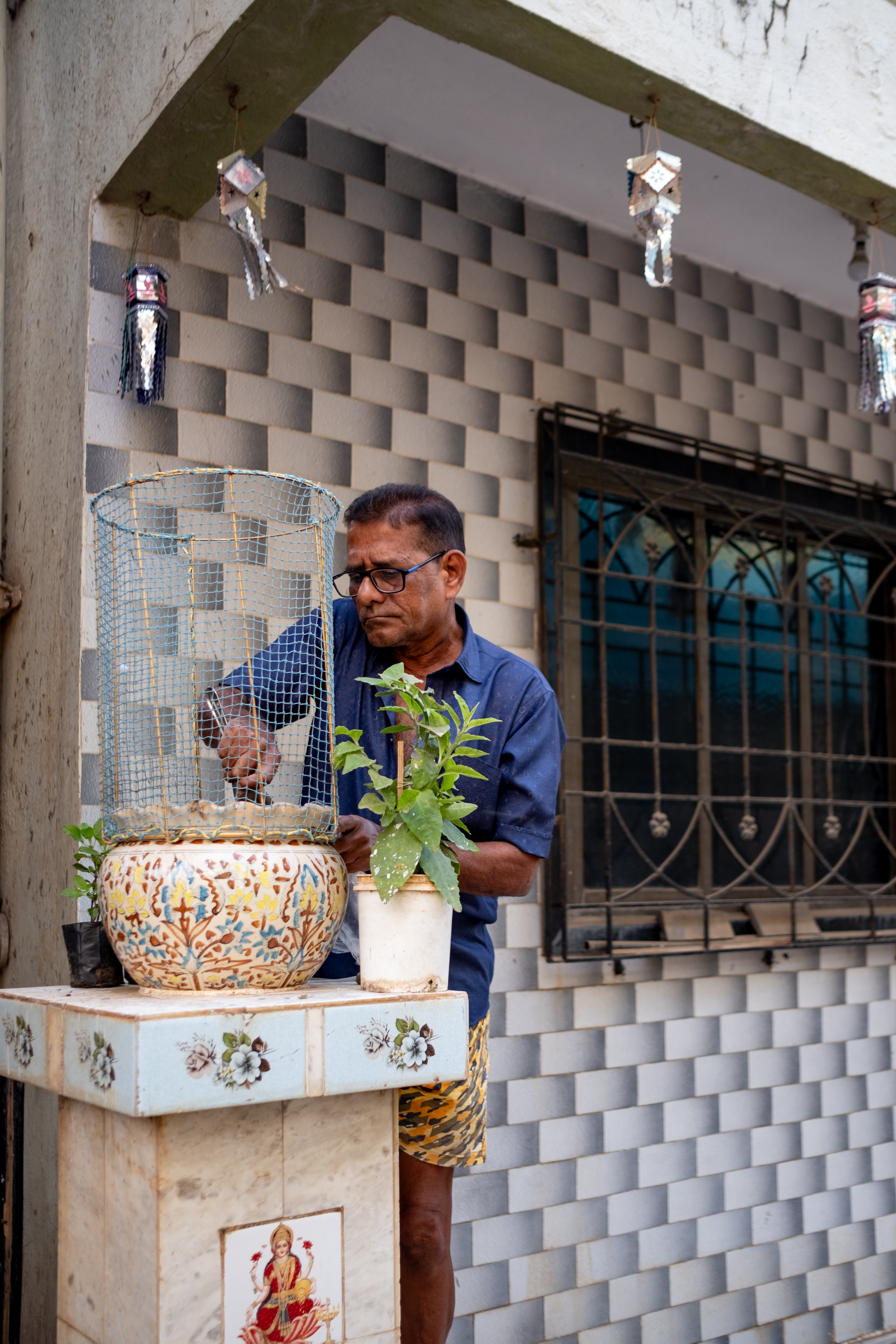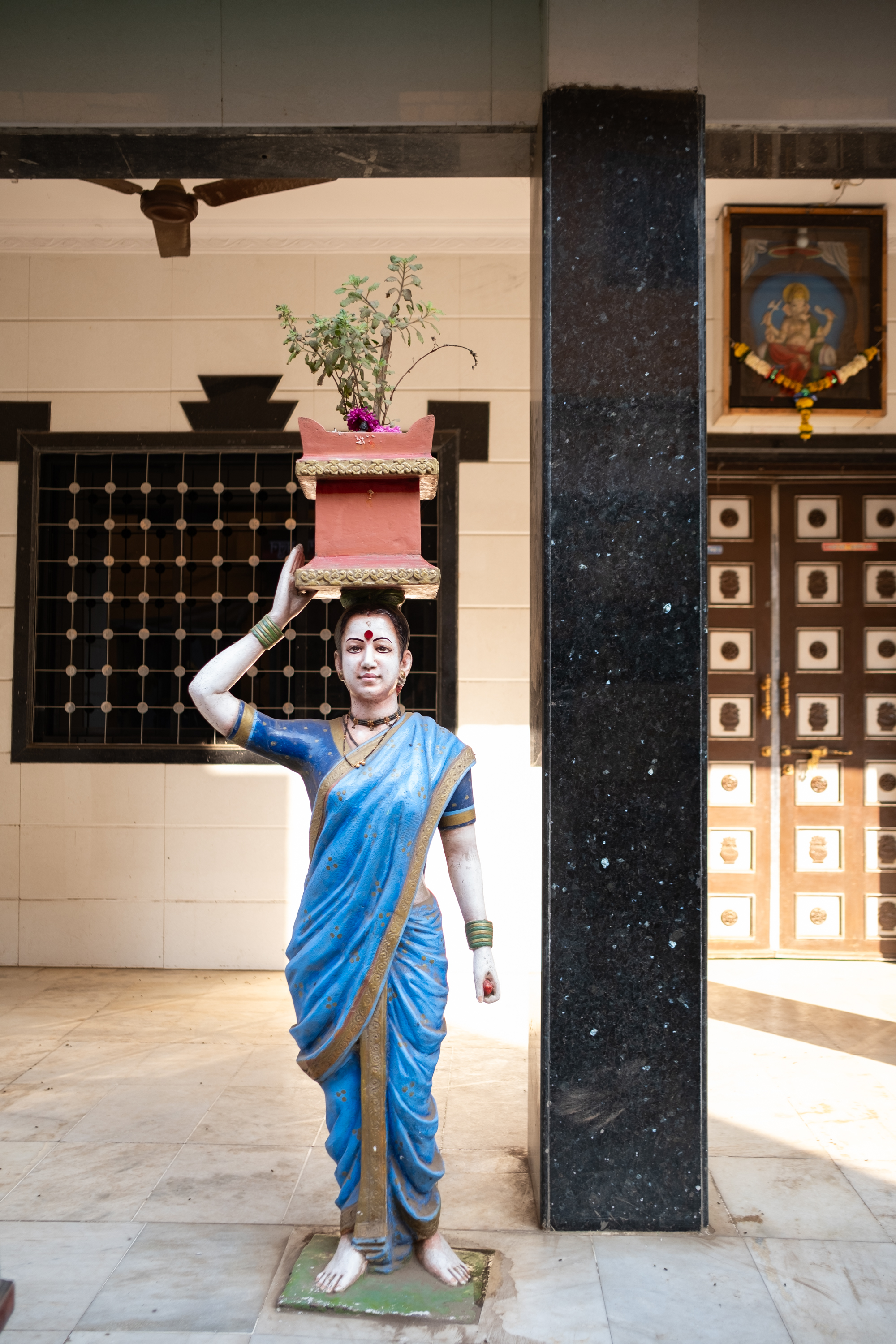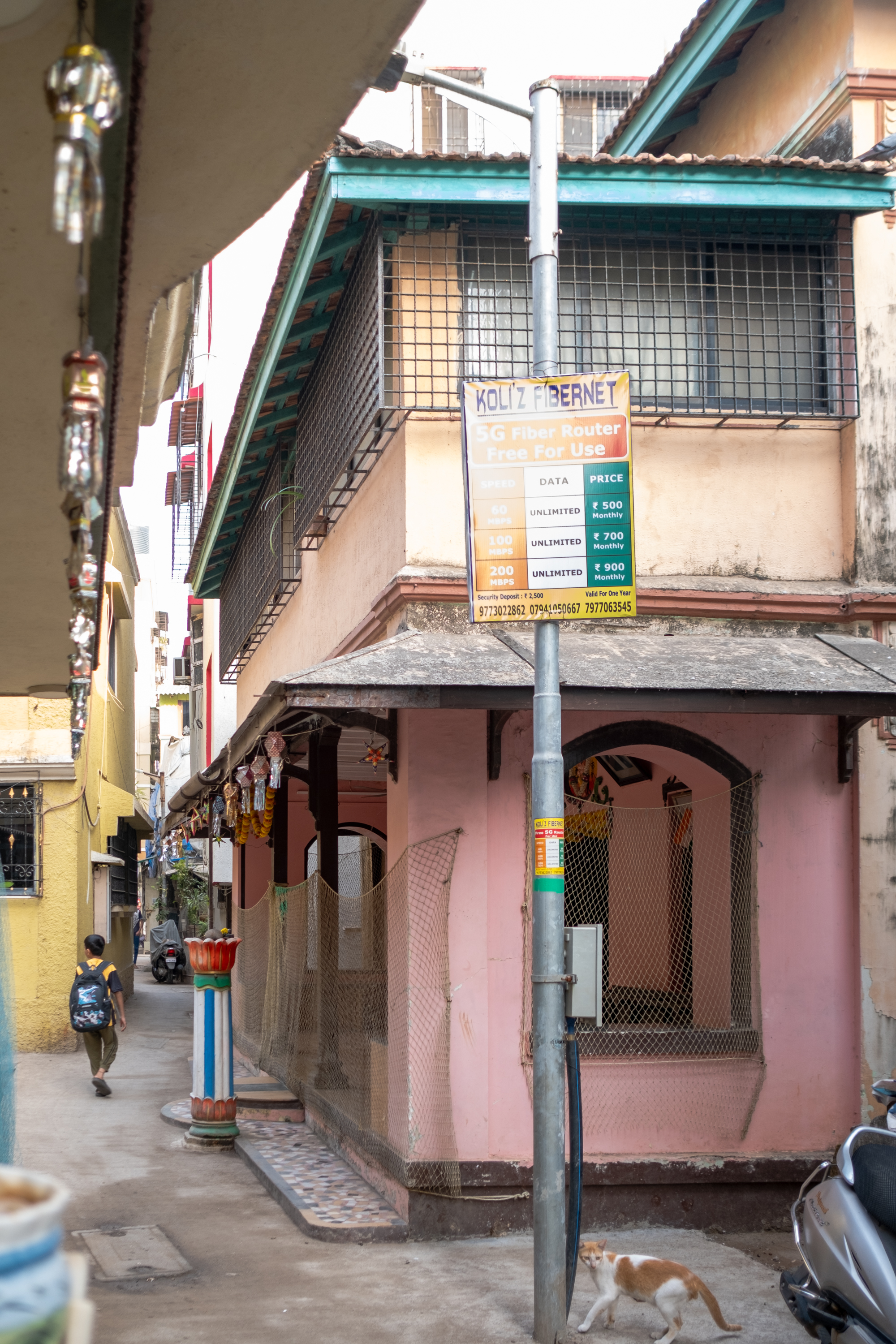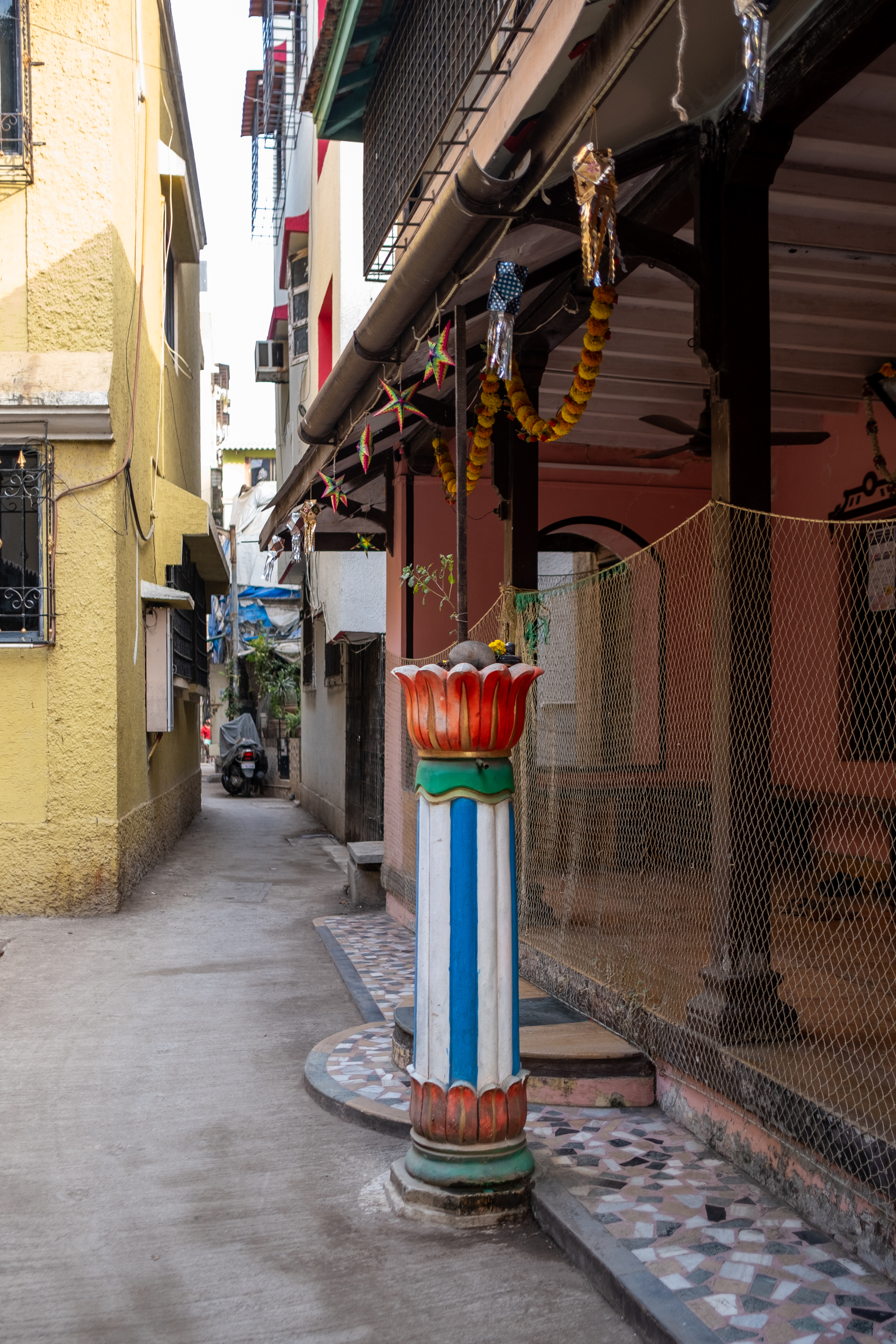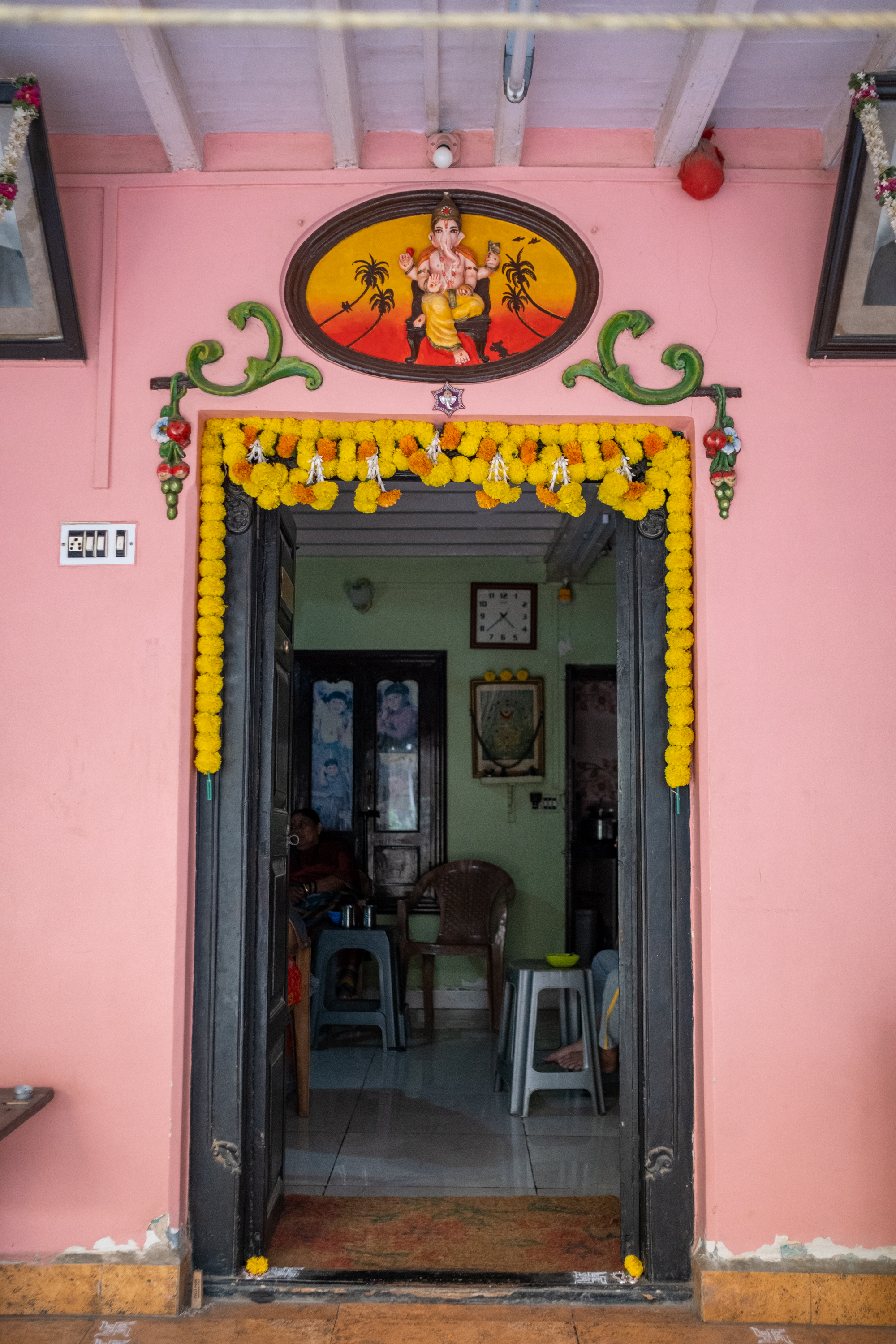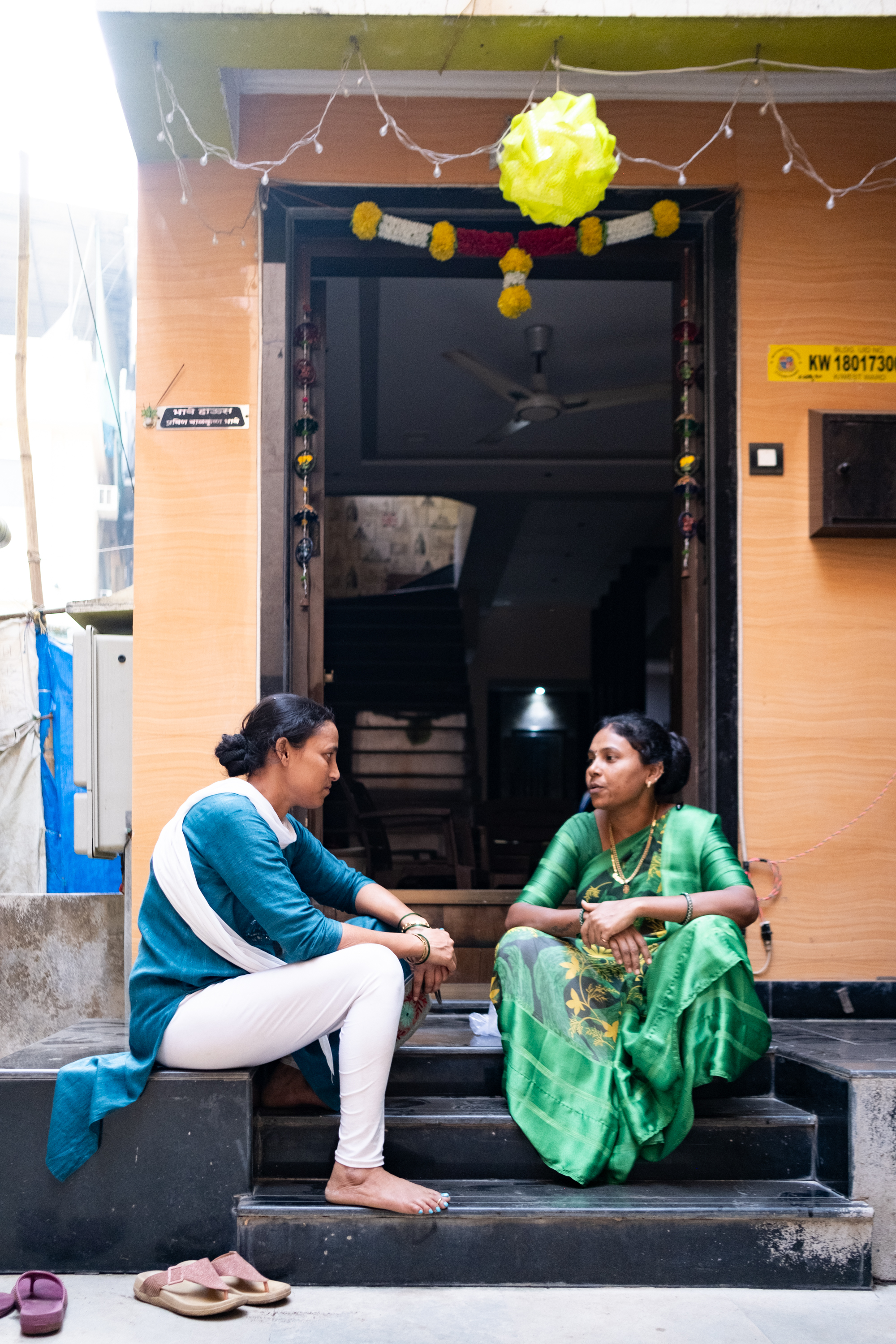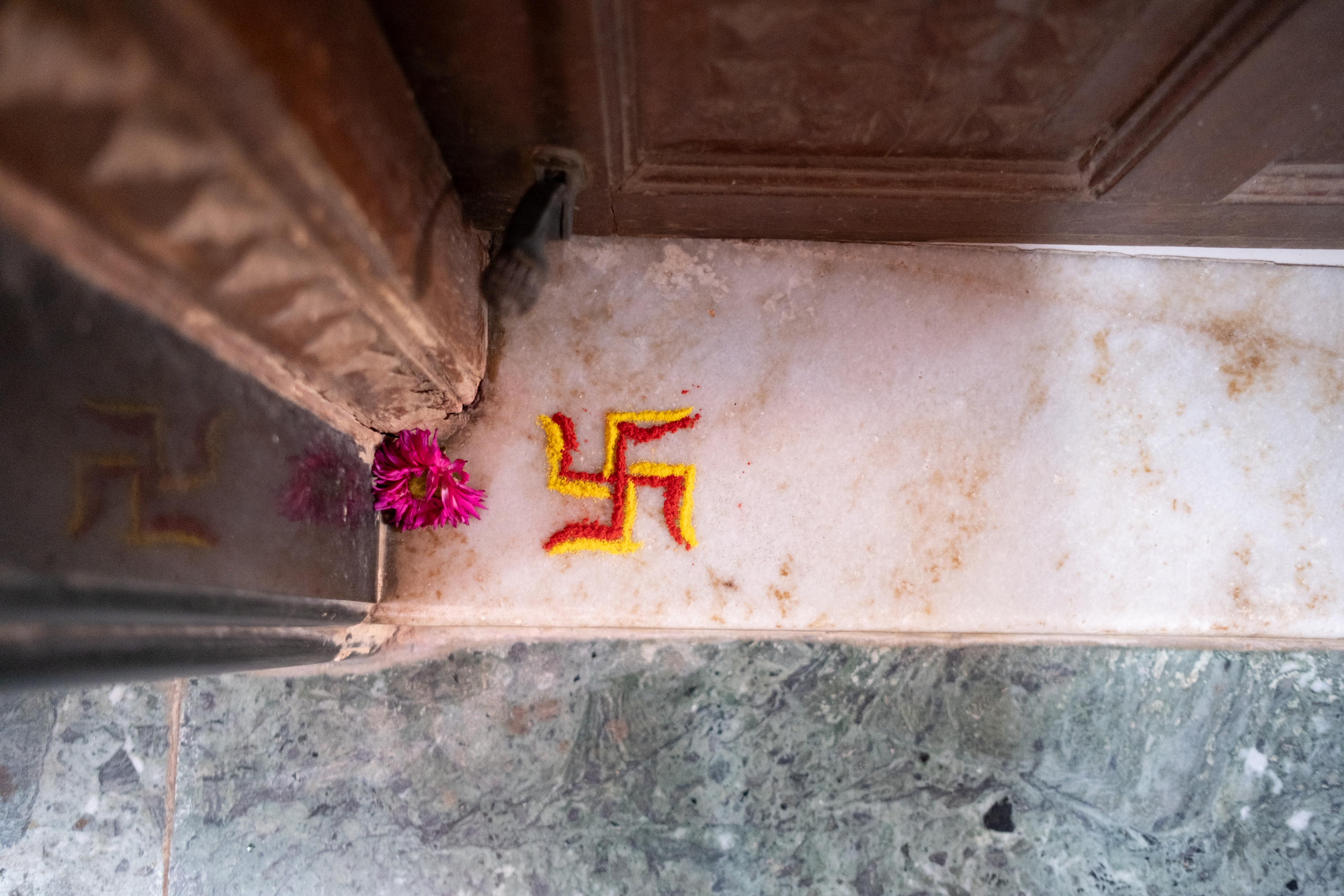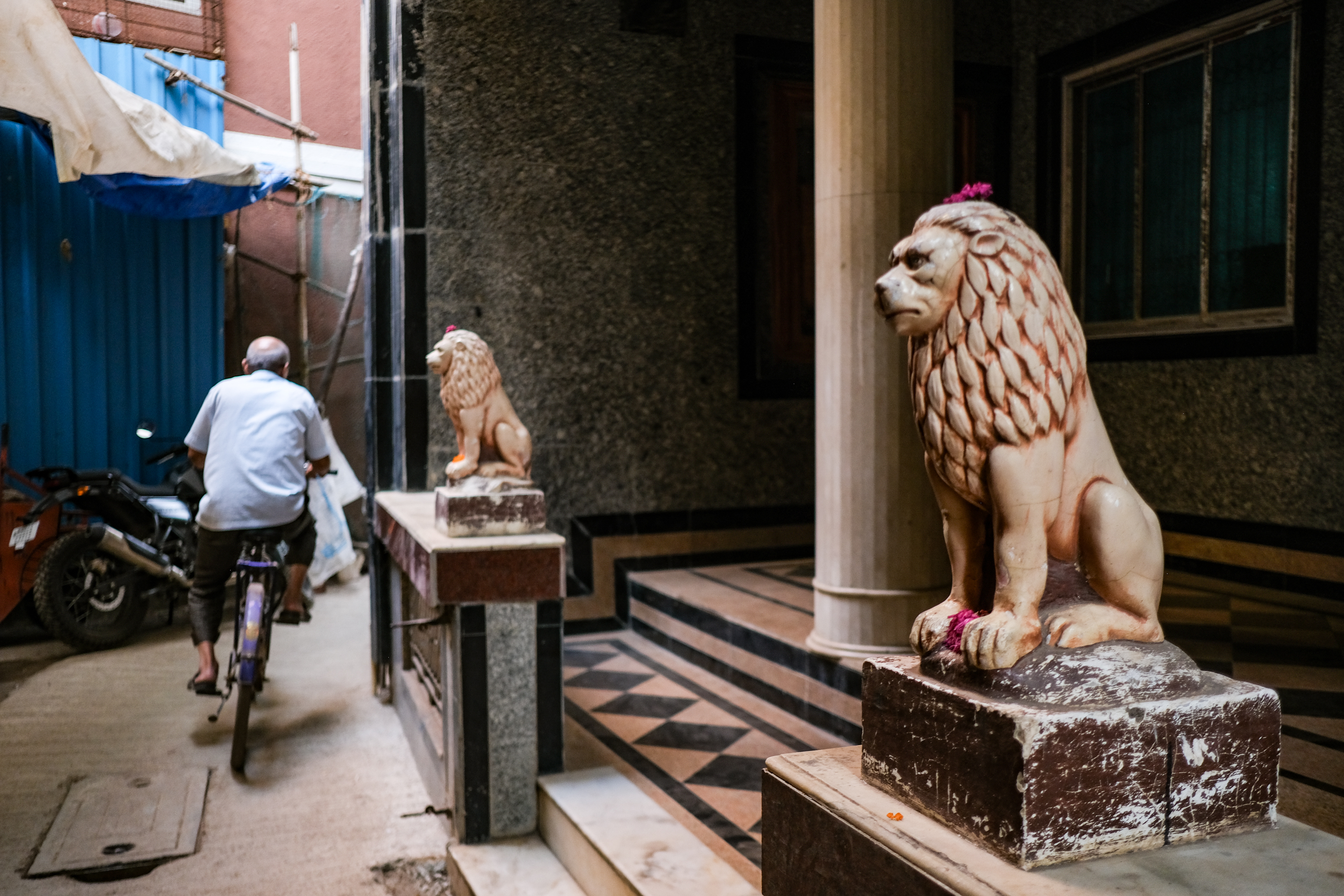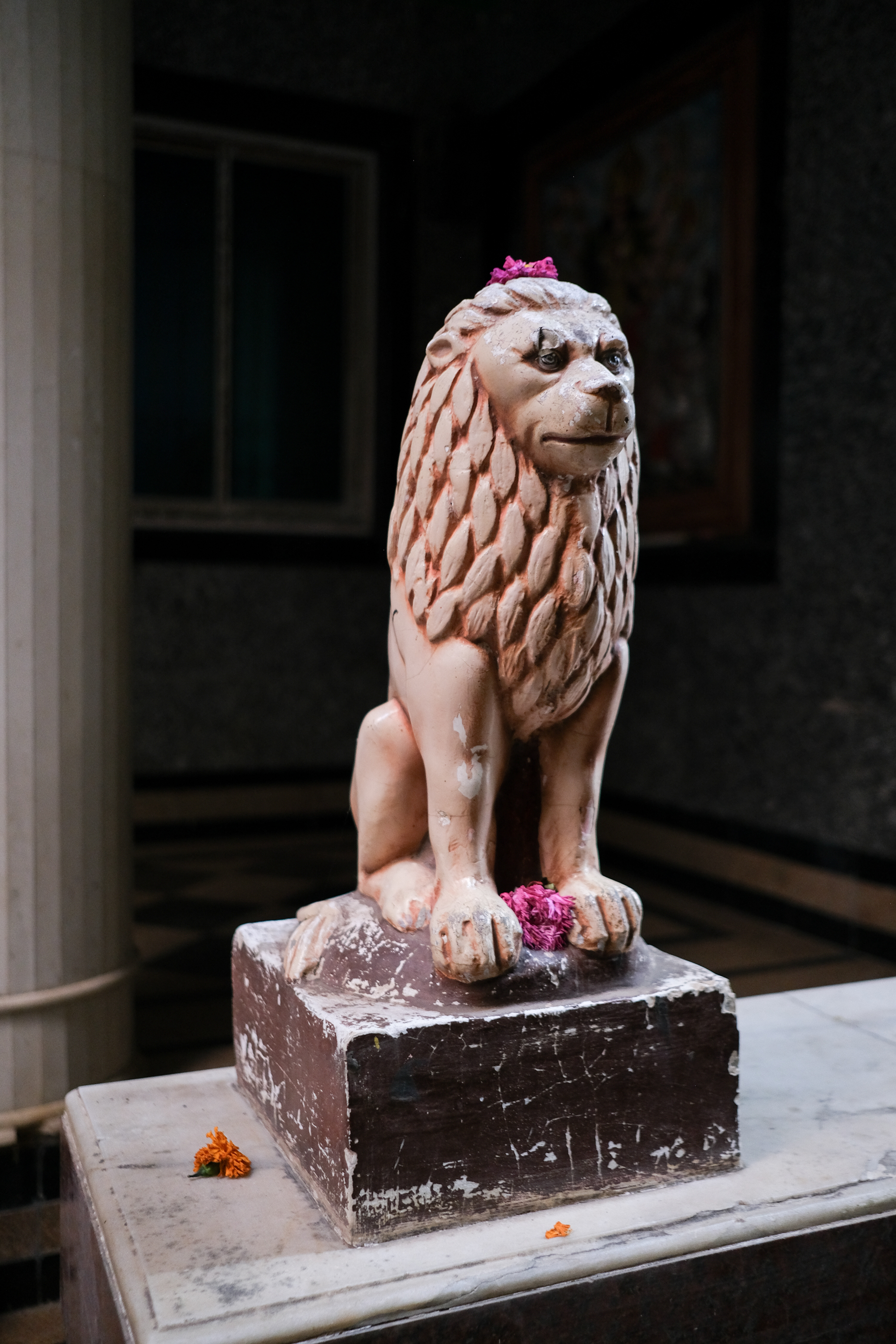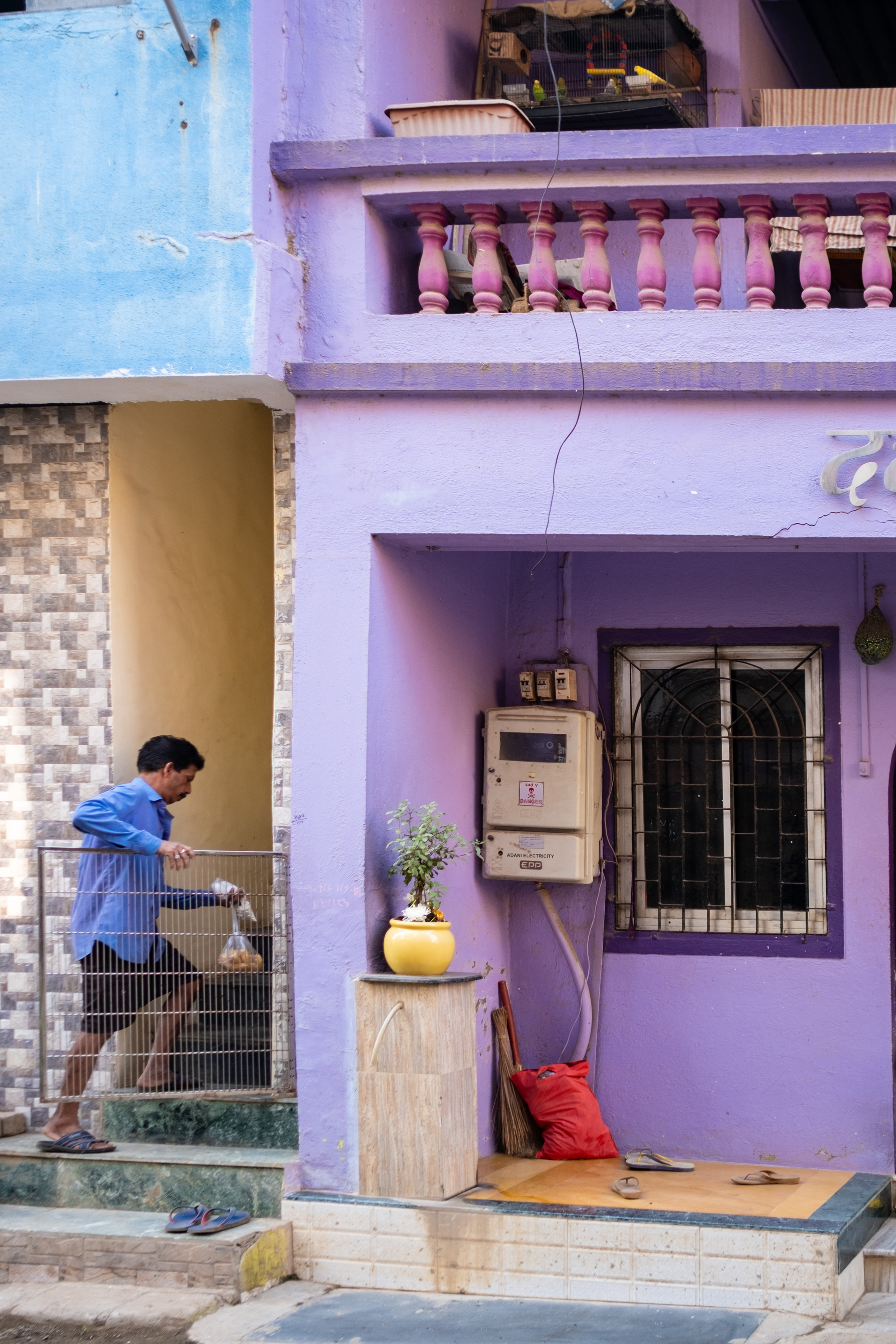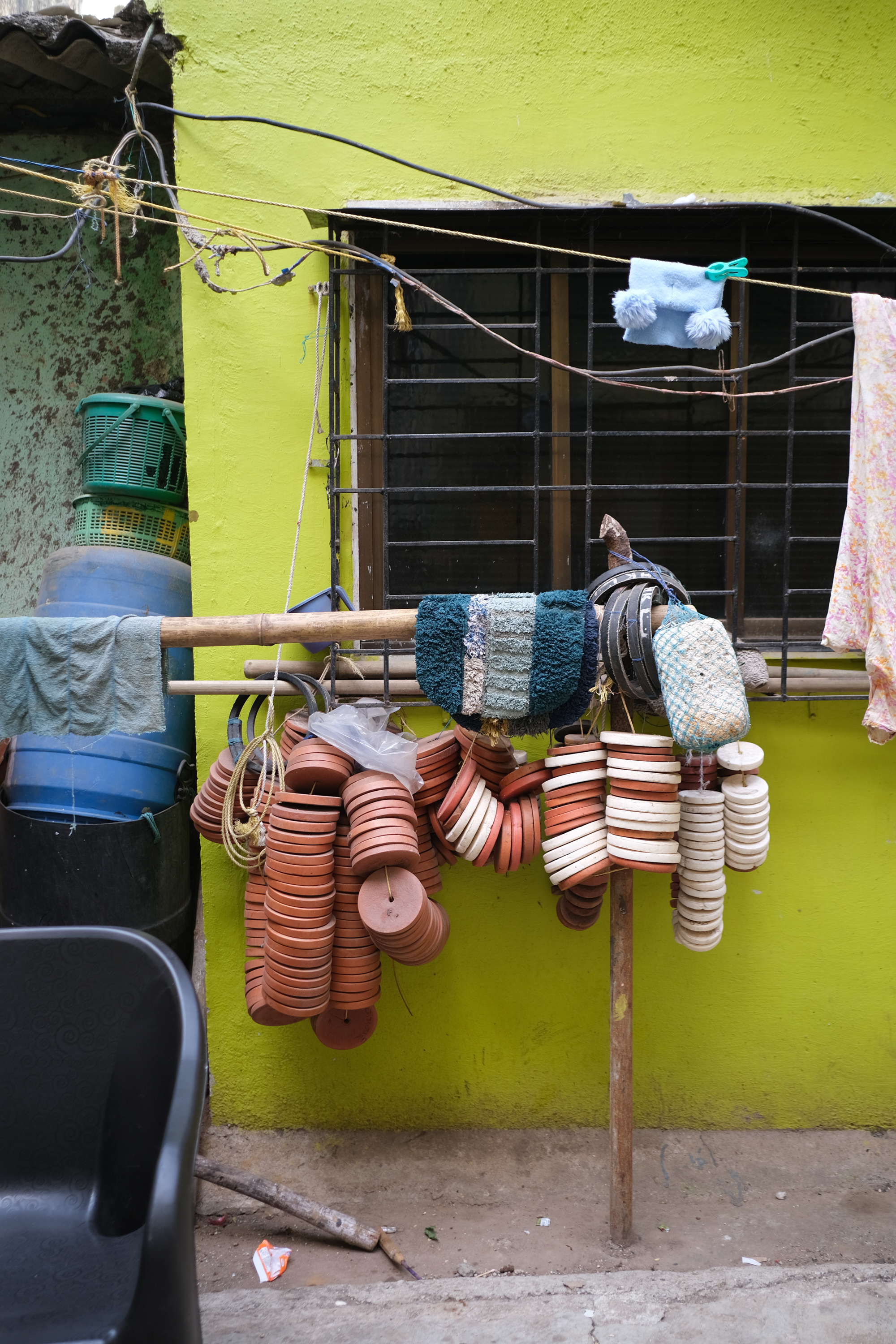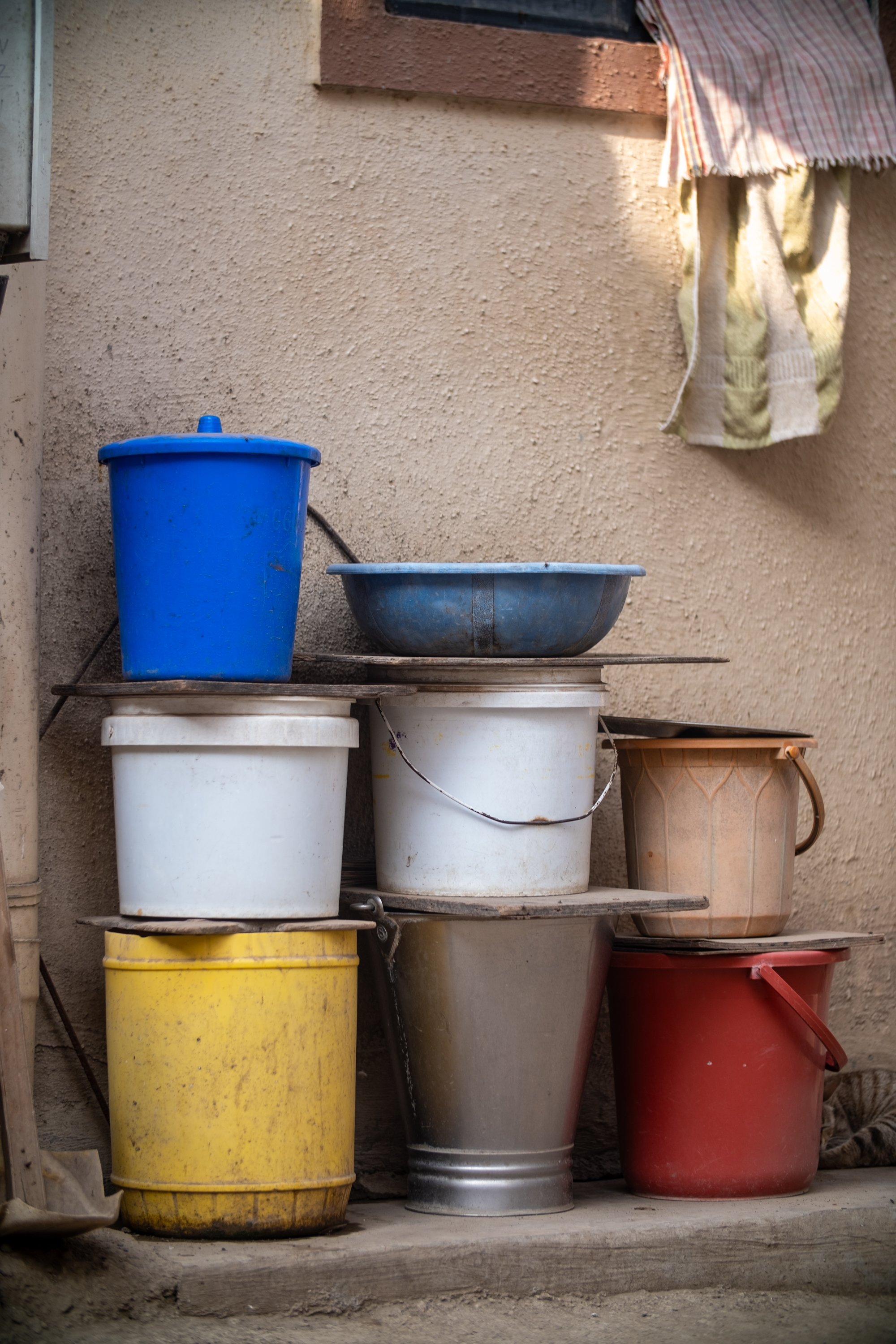Vernacular Architecture in Versova Koliwada
Known for its long stretch of sandy beach and old Koliwada (fishing village), Versova is located in the north-western suburbs of Mumbai, at the intersection where Malad Creek meets the Arabian Sea. Its historic connection to the sea is still evident in Versova Koliwada, one of the oldest Koli settlements in Mumbai. Kolis have primarily earned their livelihood through fishing in the waters of the Arabian Sea and the shallow creeks and coastal mangroves along the coastline.
Versova Koliwada's seaside location, the practical requirements of a fishing lifestyle, and the indigenous culture of the Koli community all influence its vernacular architecture and urban layout. The narrow, winding lanes lead right to Versova Beach, where fishing activities take place throughout the day. Houses are typically compact, with the need to make the best use of the available space. Many residences are built on an elevated platform or plinth to prevent flooding, which is prevalent during the monsoon season. Roofs are either thatched or covered in Mangalore tiles, which provide excellent heat insulation and quick drainage during rainstorms. The slanted roof prevents rainwater from accumulating and causing structural harm.
Versova Koliwada has undergone significant changes over the last century, as the Koli community has modernised its lifestyle and advanced its economic status. Historically, the Koli community built houses using readily available materials such as timber, bamboo, thatch, and clay. Local sourcing ensured that these materials were appropriate for the coastal climate. Bigger houses featured a central courtyard or hall that served as a communal area for household activities, social gatherings, and religious rituals. Modern times have witnessed a significant gentrification of Koli houses, as new materials such as glass, ceramic tiles, and concrete have supplanted traditional materials. Families personalise their homes using aesthetic details like carved wooden doors, vividly painted facades, decorative tilework, religious motifs painted on walls, and shrines dedicated to gods and deities.
Typically, houses featured an open veranda at the front, serving as a space for net repairs and drying platforms. People used this space for a variety of activities, such as socialising with neighbours and purchasing produce from vendors. Families used this space not only as a shed for cattle and other livestock, but also to store fodder and cowdung cakes for fuel, a practice that has become rare or nonexistent nowadays. Some houses have retained this open space at the front, though others have converted it into an extended portion of the living area.
The Tulsi plant, also known as Holy Basil (Ocimum sanctum), is integral to Koli culture, and taking care of the plant is of vital spiritual importance to Koli households. Hindu mythology claims that Tulsi, a devoted worshipper of Lord Vishnu, transformed into a holy plant after her death. Maharashtrian communities use the Tulsi plant in various rituals, including Tulsi Vivah, a symbolic wedding (vivah) between a Tulsi plant, personifying the goddess Lakshmi, and a shaligrama shila, a fossilised stone or ammonite, or an amla branch (myrobalan), both considered personifications of Lord Vishnu. In Hindu communities, Tulsi Vivah symbolises the end of the monsoon and the beginning of the wedding season.
The Koliwada also has several temples that serve as focal points for communal worship and festival celebration, such as Narali Purnima, Holi, Ganesh Chaturthi, and Krishna Janmashtami. People worship various guardian deities (Hingladevi, Masandevi, Kilashwar Mahadev, Sinyamahdev, Harbadevi, etc.) in the temples to protect the village from misfortune. Villagers come together on festivals to host cultural programs that include Koli dance, music, and other art forms, fostering a sense of pride among the community.
Versova Koliwada has undergone a significant transformation, now resembling an urban or semiurban neighbourhood rather than the charming fishing village of the past. Rapid urbanisation and development pressures pose significant challenges to maintaining the unique identity of this historic fishing village.
Versova's colloquial name is Vesave, which derives from the Marathi-Konkani word for rest (as in, a resting place for ships and seafarers), likely connected to its importance as a harbour.
The Kolis were one of Mumbai's first inhabitants, and their Koliwadas are among the oldest continuous settlements in the city, having existed for centuries.
Koli households commonly place the Tulsi planter at the entrance as a religious decoration. They come in a variety of materials, designs, and sizes. The plant is considered an earthly manifestation of the goddess Tulsi (or Vrinda), who is an avatar of Lakshmi, the goddess of wealth and the consort of Lord Vishnu. Therefore, the offering of Tulsi leaves is part of the ritual worship of Vishnu and his avatars, like Krishna and Vithoba.
The women in the household are often responsible for offering puja. Rituals involve watering the plant, purifying the space around the plant with water and cow dung, and making offerings of food, flowers, incense, gangajal (water of the River Ganga), etc. The ritual of offering the sacred fire, known as aarti, takes place around the Tulsi plant in the evening.
A Koli woman residing in Versova Koliwada.
A Tulsi plant at the home's entrance is believed to ward off evil spirits and negative energies and provide spiritual protection to the household. Even the soil around the plant is considered holy.
The unique designs of Tulsi planters have an individual stamp of creativity, indicative of the family’s social status, traditional means of livelihood, and idiosyncratic style.
A Tulsi planter, resembling a Koli fisherwoman, carries a basket on her head.
The Koli community's strong connection to the sea and maritime lifestyle influences the decorative elements used at Koli homes.
The narrow lanes and winding pathways of Versova Koliwada lead directly to Versova Beach, where fishing activities unfold throughout the day.
Timber, bamboo, thatch, and clay were the materials used to build Koli houses in the past. Concrete, cement, and ceramic tiles have mostly replaced these, although some old houses still feature wooden architecture.
Typically, bigger houses featured a central courtyard. The open design ensured maximum airflow and natural light, creating a salubrious living environment.
An elevated platform in front of the entrance is a common design element in many Koli houses. People used this space for a variety of activities, such as socialising with neighbours and purchasing produce from mobile vendors.
On auspicious occasions, Hindu families draw the swastika (an auspicious symbol) in rangoli (colored sand) outside their homes.
The common religious decoration in Koli households is the placement of a small image of Lord Ganesha over the main doorway. It is believed that placing Lord Ganesha's presence at the doorway brings harmony and prosperity into the house.
Many Koli houses are built on an elevated platform or plinth to protect against flooding, a common occurrence during the monsoon season.
Some houses have retained the open space at the front, though others have converted it into an extended portion of the living area. The open design ensured maximum airflow and natural light, creating a salubrious living environment.
A Koli house features a painted shrimp on its doorway.
A lion stands guard outside the house entrance. People have offered flowers to the lion, as it represents the vahana (mount) of the goddess Durga.
Families personalise their homes using details like carved doors and decorative tilework.
The roofs are usually thatched or covered in Mangalore tiles, which provide excellent insulation against heat and quick drainage during rains.
The arrangement of houses in the Koliwada is typically compact, with a focus on efficient use of space.
Fishing equipment is stored on the open veranda at the front of some houses.
Modern amenities are not available in adequate measures, and there is a need to address civic facilities.
During festivals and weddings, people make traditional floral torans from marigolds and mango leaves. People hang torans from doorways to welcome the goddess of wealth, Lakshmi, into their household.
A Koli household is adorned with a purna kalasha, a pot filled with mango leaves and coconut. This auspicious symbol serves as a ceremonial offering to the household deity, as well as a decorative motif outside shrines and at home entrances.
